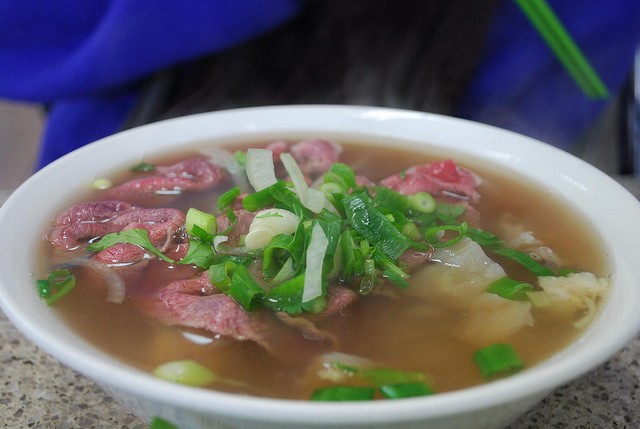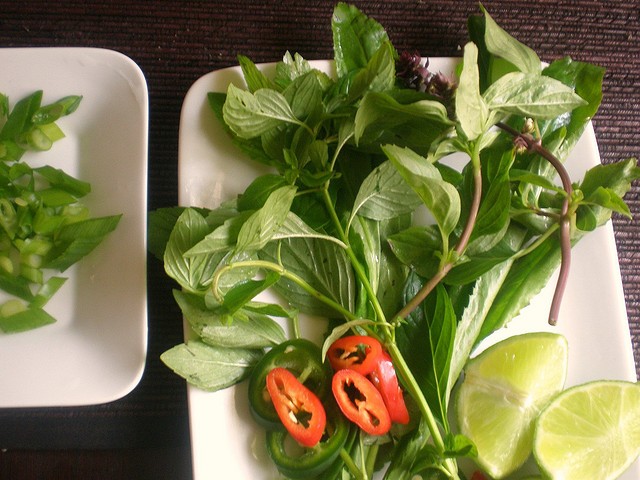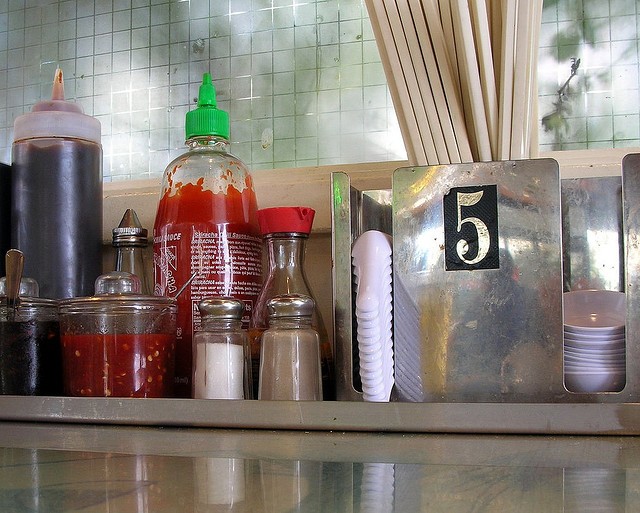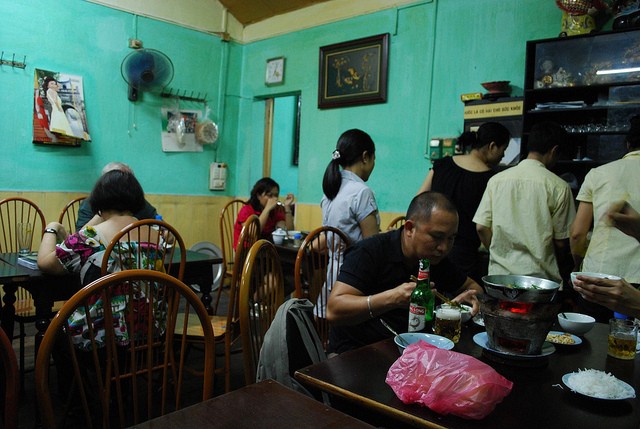
On a cold, rainy day, especially when one has the sniffles, there's
nothing better than a warm, rich bowl of Vietnamese beef noodle soup. If
chicken soup is Jewish penicillin, then phở is Vietnamese
pseudoephedrine. It's not possible to feel bad while eating a bowl of
phở, but it is possible to get a substandard bowl of phở.
]
The broth may not have the same care; the noodles may be undercooked or, worse, not even bánh phở (we've been in phở shops which use–the horror!–rice vermicelli). Some signals of a good phở shop are obvious: busy patronage, Vietnamese clientele, bilingual menus, basic décor. Here are a few more signs to look for when searching out the best soup:
1. Greenery Galore

Phở is always, always served with rau thơm (or xà lách dĩa), a plate of herbs and spices meant for you, the diner, to doctor the soup to your preference. Fake phở shops will offer a few strands of basil and maybe some cilantro and some elderly sprouts. Cautious diners look for fresh sprouts, chiles on the plate, a wedge of lime, and various herbs: sawtooth herb (culantro) is a sign of a serious phở shop. If there are no table salads on the tables, don't eat there.
2. Chile Choice
Also on every table will be a carousel of various sauces. Sriracha (rooster sauce) is a given, but look for hoisin sauce and other chile preparations: chile paste and dried chiles in “red oil”. The more chile preparations on the table, the more likely it is to cater to a Vietnamese clientele, and the more likely you are to have good phở.
3. Pepper Provision

Look for tiny little saucers on the table, and look for shakers of finely-ground black pepper. While a mix of hoisin and rooster sauce is a great dip for the beef in your phở, an even better one–and one that will make your waitstaff look at you differently–is ground pepper made into a paste with a little juice freshly squeezed from the lime on the table salad you got in #1.
4. Meat Mania
Phở is meant to be made with a selection of meats, not all of which are familiar to the American palate. Seeing only “normal” cuts such as rare, well-done or brisket on a menu is a warning sign: not being given any choice at all can also be a warning sign (unless the place serves only phở đặc biệt, house special phở). Look for tendon, tripe, fatty flank and meatballs, even if you don't intend to order them.
5. Paying Properly

If you see people paying from the table, you are almost certainly in an Americanized phở shop, a place where they've changed the method of service from the Vietnamese to the American. In the tiny phở shops of Little Saigon, money changes hands only at the cash register. When you're done, get up and pay at the cash register; they'll know who you are and what you ate.

